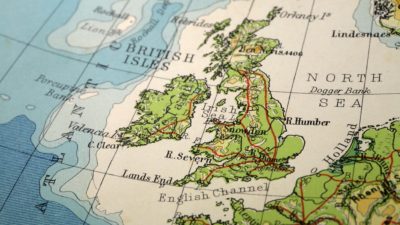Rolls-Royce has taken all the headlines lately, but over five years there’s a larger gainer on the FTSE 100 — Frasers Group (LSE: FRAS)
If I’d invested £1,000 in this British retail company five years ago, I’d have slightly less than £4,000 today. That’s not a mind-blowing amount, but it’s still the highest return on the index. Naturally, the pandemic’s to blame for slow growth in other shares. Performance over a three-year period (post-pandemic) is much higher, with Rolls returning 370% in that time.
But Fraser’s ability to perform well despite the pandemic speaks volumes to the company’s resilience. So I’m considering whether this lesser-known FTSE gem could make a good long-term investment.
Should you invest £1,000 in Tritax Big Box right now?
When investing expert Mark Rogers has a stock tip, it can pay to listen. After all, the flagship Motley Fool Share Advisor newsletter he has run for nearly a decade has provided thousands of paying members with top stock recommendations from the UK and US markets. And right now, Mark thinks there are 6 standout stocks that investors should consider buying. Want to see if Tritax Big Box made the list?
Sports and fashion
Frasers’ most popular brand is Sports Direct, but it has many others, like House of Fraser, Flannels, Game, Studio Retail and more. Each caters to a different demographic, increasing the company’s defensive credentials. By offering extremely competitive pricing, Sports Direct, for instance, supported a big chunk of Frasers’ profits through 2023.
The premium House of Fraser department store brand has been less successful, with many of the high street stores across the UK closing. It’s had problems for years, but stubbornly high interest rates have likely forced consumers to opt for lower-cost alternatives, delaying its recovery. And it’s not alone — high-end fashion brands like Burberry have suffered a similar fate. Yet Frasers’ upmarket Flannels chain appears strong and is a major focus for investment.
What’s key here is that by appealing to consumers on both ends of the spectrum, Frasers can ultimately weather most storms. But its trajectory isn’t smooth. In July 2022, the share price hit an all-time high of £9.42 and it came close to beating that record again in December last year. Now at £8.53, it’s down 3.6% this year.
So where to from here?
When I see a stock that recently posted a new all-time high, I’m usually cautious. With no historical price levels to aim for, it’s difficult to gauge its future growth. And in the case of Frasers, several metrics back this thesis.
With earnings forecast to decline, the current price-to-earnings (P/E) ratio of 7.1 could increase to 9.8 in the next year. That’s still low, but with the price already declining, it could be a sign of things to come. What’s more, based on future cash flow estimates, the stock may be overvalued by 18.6%.
My verdict
Over the past 20 years, the Frasers’ share price has been quite volatile. It dipped during the 2008 financial crisis only to gain 2,000% in the following six years. It then crashed again in 2015 and only fully recovered after Covid.
The large dips and gains create potentially lucrative opportunities for traders aiming to buy and sell often. But as a long-term passive investment, the volatility makes it unattractive. Moreso, it doesn’t pay a dividend, so there’s no added value when the price is in decline.
All things considered, I don’t see a strong argument to buy the shares. Going on past performance, I expect a price decline at some point in the next few years. Yes, the past five years have been good to shareholders, but longterm, it doesn’t appeal to me. When it comes to retail, I prefer the lower-risk appeal of dividend stocks like Tesco or Unilever.








